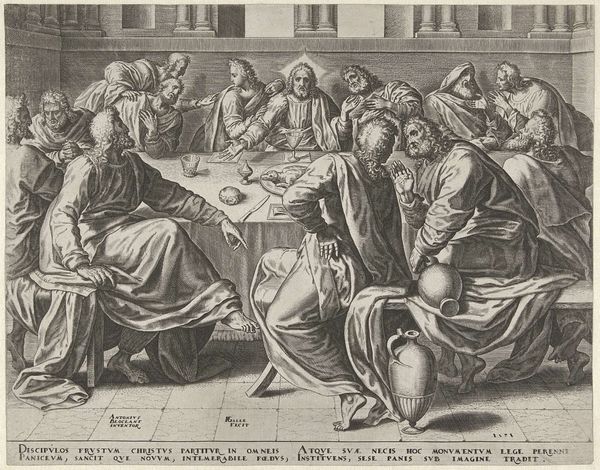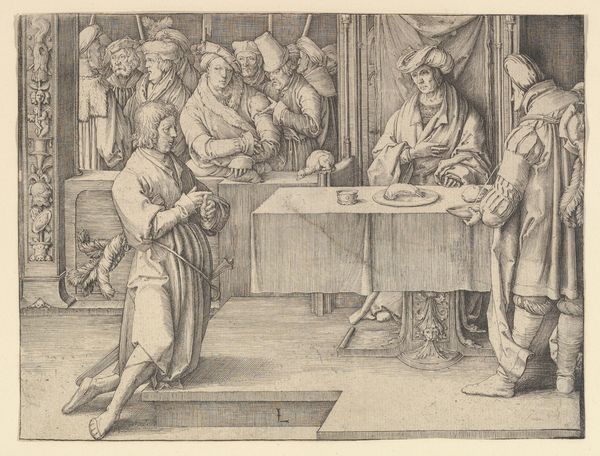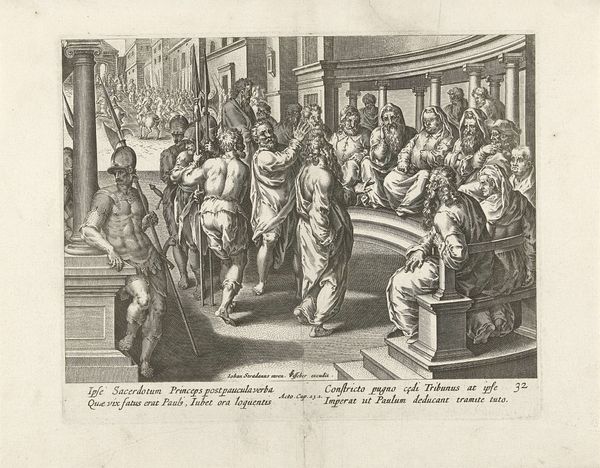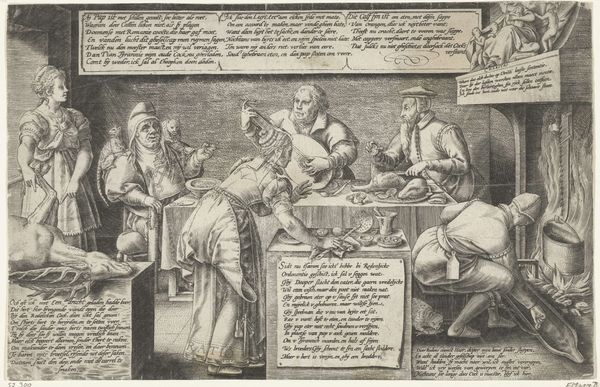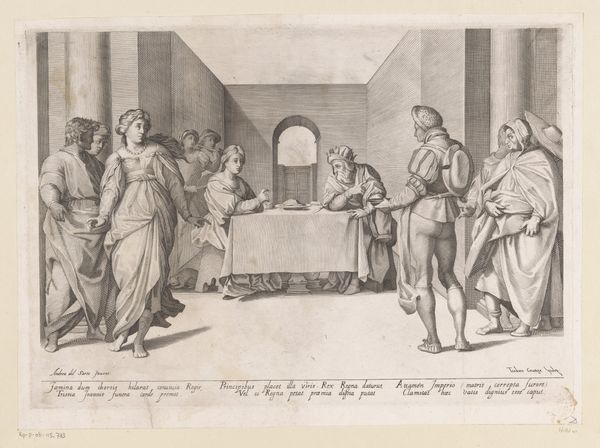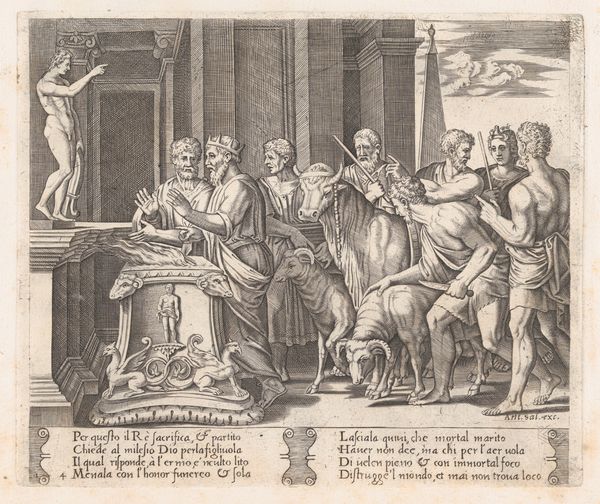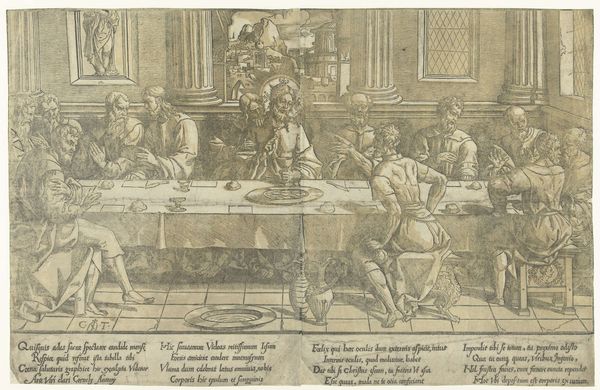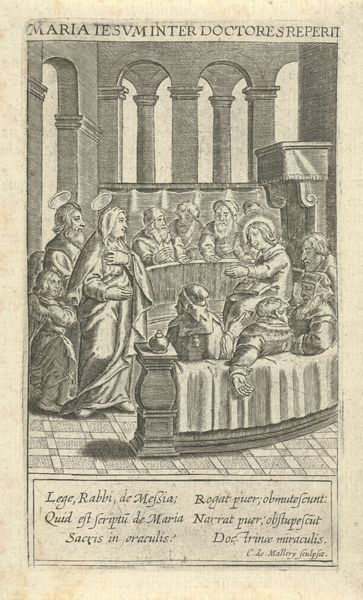
print, ink, engraving
#
narrative-art
#
baroque
# print
#
figuration
#
ink
#
history-painting
#
italian-renaissance
#
engraving
Dimensions: height 385 mm, width 487 mm
Copyright: Rijks Museum: Open Domain
Curator: This is "Het Laatste Avondmaal (rechterdeel)", or "The Last Supper (right section)," an engraving by Dietrich Krüger, likely created between 1590 and 1621. Currently, it resides in the Rijksmuseum. Editor: My immediate impression is one of intense stillness despite the narrative subject. The muted tones and precise lines create a powerful, contemplative atmosphere. Curator: Indeed, the stillness is striking. It captures a very particular moment, a moment of hushed betrayal within the baroque style. It's also quite interesting how the figures, though rendered in print, draw heavily on the Italian Renaissance for artistic influence. It reminds one of Leonardo DaVinci’s masterpiece. Editor: Structurally, I find Krüger's choice to present only a section intriguing. The truncated composition disrupts the traditional panoramic view of the Last Supper. The table dominates, pushing the figures towards the upper register. What impact do you believe this has on our interpretation? Curator: This forces us to consider the symbolic importance of what isn't there as much as what is. The viewer must reckon with a sense of something missing, suggesting themes of loss, incompleteness, and the fractured nature of faith itself, don’t you think? Furthermore, if you analyze some details like gesture and placement of hands it echoes common understandings about these historical and spiritual characters. Editor: The intricate engraving work contributes a great deal. The parallel lines and cross-hatching not only define form and texture but also seem to impart a certain nervous energy to the surface. It's as if the scene is perpetually on the verge of dissolving into pure line. Curator: It reflects a cultural memory deeply entrenched in religious doctrine. But even beyond this, what moves me is Krüger’s focus on human emotions through this sacred event and the universal experience of betrayal. Editor: Ultimately, I am fascinated by the contrast between the work's graphic flatness and the illusion of depth, its intricate details, and its ability to evoke an enduring moment. Curator: It’s a work that bridges religious representation with stark human emotional response, skillfully portrayed through the artistry of engraving and the subtle strength of composition.
Comments
No comments
Be the first to comment and join the conversation on the ultimate creative platform.


